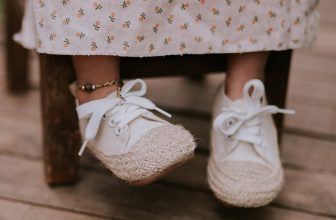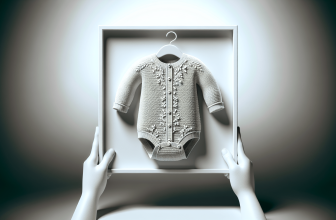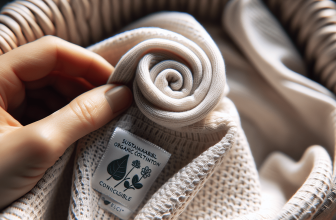As your little bundle of joy continues to grow, so too does the need to update their wardrobe. It can be overwhelming trying to keep up with their changing size and style preferences, but fear not! This article is here to provide you with some helpful tips and tricks for transitioning your baby’s wardrobe seamlessly. From organizing clothes by size to repurposing old garments, you’ll find practical advice that will make the task of updating their wardrobe a breeze. Say goodbye to the days of struggling to find clothes that fit, and say hello to a well-organized and stylish wardrobe for your growing baby!
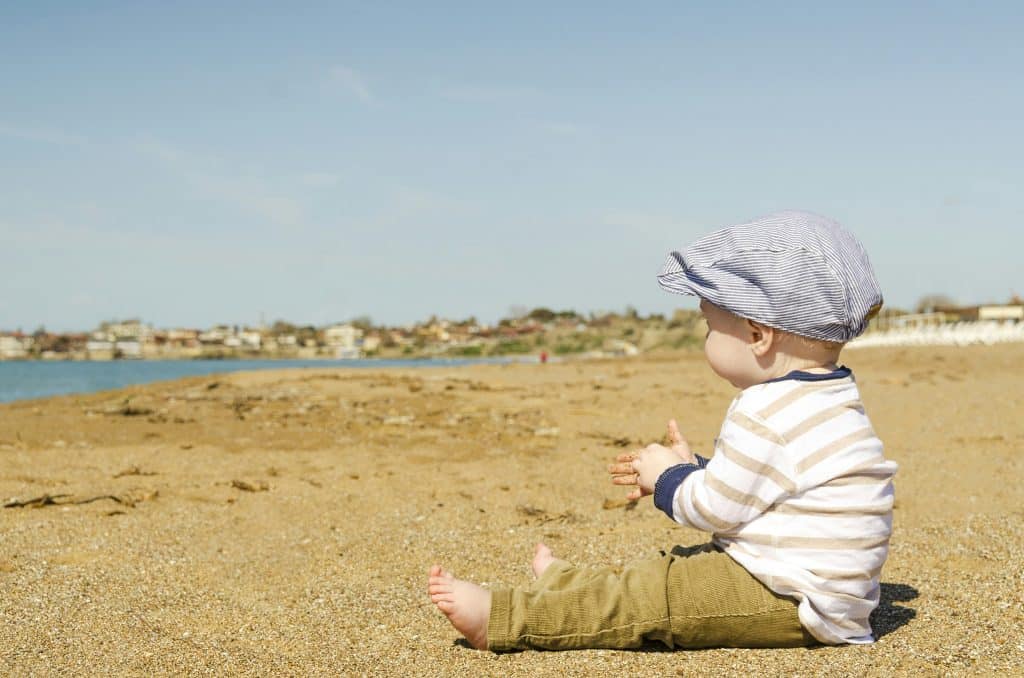
This image is property of images.unsplash.com.
Consider sizing up
Pay attention to the size label
When it comes to dressing your growing baby or child, it’s important to pay attention to the size labels on clothing. While age ranges can serve as a general guide, every child grows at their own pace. Clothing labeled with a specific age may not always fit your child perfectly, so it’s a good idea to consider sizing up. This can ensure that your little one will have room to grow into their clothes and be comfortable throughout the day.
Account for growth spurts
Babies and children often experience growth spurts, where they seem to grow overnight. It’s helpful to anticipate these growth spurts and take them into account when selecting clothing. Instead of only choosing clothing that currently fits your child, consider selecting pieces that have some built-in room for growth. This will help the clothes last longer and prevent you from having to constantly update your child’s wardrobe.
Consider the season
When transitioning your child’s wardrobe, it’s important to consider the season. During colder months, you’ll want to have warmer clothing options on hand, such as sweaters, jackets, and hats. In warmer months, light and breathable fabrics such as cotton or linen will help keep your child comfortable. By considering the season, you can ensure that your child is dressed appropriately for the weather while still remaining stylish.
Choose versatile clothing
Opt for mix-and-match pieces
To make your child’s wardrobe more versatile, opt for mix-and-match pieces. Choosing items that can be easily paired together in different combinations will give you more outfit options with fewer clothing items. Look for solid-colored tops and bottoms that can be easily matched and layered with other pieces. This not only saves you money but also makes it easier to create different outfits for different occasions.
Select clothing that can be layered
Layering is not only fashionable but also practical when it comes to dressing your child. Look for clothing that can be easily layered, such as long-sleeved shirts, cardigans, and vests. Layering allows you to adjust your child’s clothing according to the temperature and provides added warmth during cooler seasons. It also gives you the flexibility to remove layers if the weather warms up.
Look for adjustable features
Children grow quickly, and their clothing needs to be able to adapt to their changing bodies. When selecting clothing, keep an eye out for adjustable features such as elastic waistbands, adjustable straps, and buttoned or expandable cuffs. These features allow you to customize the fit, ensuring that the clothing lasts longer and can be adjusted as your child grows.
Organize and store outgrown clothing
Sort and categorize
As your child grows, they will inevitably outgrow their clothes. To keep your child’s wardrobe organized and easily accessible, it’s important to sort and categorize the outgrown clothing. Separate the items by size, season, and type of clothing (e.g., tops, bottoms, outerwear). This will make it easier to locate clothing in the future and help you keep track of what your child has available in their current size.
Label storage containers
When storing outgrown clothing, it’s helpful to label the storage containers. Use clear, plastic containers that are durable and stackable. Label each container with the size and season of the clothing inside. This will save you time and frustration when it comes time to retrieve the stored clothing for your next child or for donation purposes.
Consider donating or selling
If you no longer need the outgrown clothing, consider donating them to a local charity or selling them to other parents in need. Donating clothing ensures that they are put to good use by families who may not have the means to purchase brand new clothing. Selling the clothing, either online or through a yard sale, can help you recoup some of the costs and make room for new items in your child’s wardrobe.
Shop strategically
Take advantage of sales and discounts
When shopping for your child’s wardrobe, it’s always wise to take advantage of sales and discounts. Keep an eye out for seasonal sales, holiday promotions, and clearance events. These opportunities can help you save money and allow you to invest in quality clothing without breaking the bank. Sign up for newsletters or follow your favorite stores on social media to stay informed about upcoming sales and discounts.
Shop ahead for future sizes
To save time and money, consider shopping ahead for future sizes. Anticipate your child’s growth and purchase clothing in larger sizes when you come across a great deal. This way, you’ll have a stock of clothing ready for when your child outgrows their current wardrobe. Just make sure to keep a record of what you have purchased and where it is stored to avoid duplicates or forgotten items.
Choose quality over quantity
When it comes to dressing your child, it’s important to prioritize quality over quantity. Investing in well-made clothing may cost a bit more upfront, but it will save you money in the long run. High-quality clothing typically lasts longer, withstands wear and tear, and can be passed down to younger siblings or other family members. Look for durable fabrics, reinforced seams, and attention to detail when selecting clothing for your child.
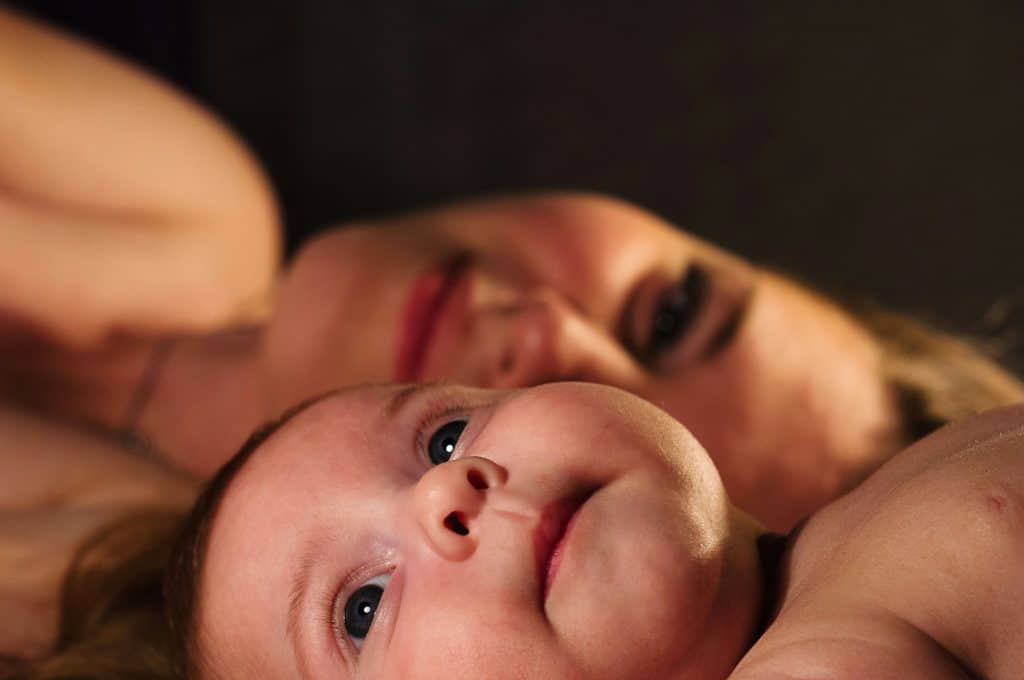
This image is property of images.unsplash.com.
Invest in transitional pieces
Opt for convertible clothing
Transitional pieces are a great investment as they can be used across multiple seasons. Look for convertible clothing options, such as pants with detachable legs that can be converted into shorts, or jackets with removable linings. These versatile pieces can be adjusted to suit the changing weather and ensure that your child remains comfortable throughout the day.
Choose adjustable footwear
Just like clothing, your child’s feet grow rapidly. When it comes to footwear, consider options that can be adjusted to accommodate growing feet, such as shoes with adjustable straps or elastic laces. These features allow you to customize the fit as your child’s feet grow, ensuring that they can wear their shoes comfortably for longer periods. Additionally, choose shoes made from breathable materials to keep your child’s feet comfortable and odor-free.
Consider clothing with growth panels
Growth panels are a fantastic feature to look for when shopping for your child’s wardrobe. These panels are typically found in pants and can be adjusted to accommodate a growing child’s legs. As your child grows taller, you can simply adjust the length of the pants by extending or removing the growth panel. This feature not only prolongs the life of the garment but also provides a more tailored fit for your child.
Consider comfort and ease
Choose soft and breathable materials
When selecting clothing for your child, prioritize comfort by choosing soft and breathable materials. Natural fabrics like cotton and linen are soft to the touch and allow airflow, preventing your child from becoming too hot or irritated. Avoid synthetic materials that may cause discomfort or allergies, especially for babies with sensitive skin. Opting for clothing made from natural fibers ensures that your child stays comfortable all day long.
Opt for clothing with easy closures
Dressing a quickly growing child can sometimes be a challenge, so choosing clothing with easy closures can make the process much smoother. Look for clothing with snap buttons, hook and loop fasteners, or elastic waistbands that are easy to maneuver and adjust. Avoid clothing with complicated buttons or zippers that may frustrate your child or slow down your morning routine.
Consider adaptive clothing options
For children with specific sensory needs or physical limitations, adaptive clothing can be a game-changer. Adaptive clothing is designed with thoughtful features, such as hidden or flat seams, sensory-friendly fabrics, or clothing that can be easily put on and taken off. These clothing options prioritize comfort and ease of dressing, allowing your child to move freely and confidently.

This image is property of images.unsplash.com.
Adapt older clothing for the next stage
Modify or alter garments
If you have a sewing machine handy or some basic sewing skills, consider modifying or altering older clothing to fit your child’s new stage. Shorten pants or skirts, adjust waistbands, or add growth panels to extend the life of the garment. With a little creativity and resourcefulness, you can transform previously outgrown clothing into new and perfectly fitting pieces for your child.
Add accessories for a fresh look
Accessories can breathe new life into older clothing, giving them a fresh and updated look. Add a colorful belt to cinch a loose dress or tunic, or layer a fun scarf over a plain shirt for added style. Hair accessories, such as headbands or bows, can also add a pop of color and personality to an outfit. Accessories allow you to get creative and maximize the use of your child’s clothing.
Mix and match clothing pieces
Mixing and matching clothing pieces is a great way to extend the life of your child’s wardrobe and create new outfits. Combine tops and bottoms from different sets or mix patterns and colors to create unique and stylish ensembles. Mixing and matching also encourages your child to express their own sense of style and creativity.
Get creative with hand-me-downs
Make alterations as needed
Hand-me-downs from older siblings, cousins, or friends can be a cost-effective way to build your child’s wardrobe. However, keep in mind that not all hand-me-downs will fit perfectly. To make the most of hand-me-downs, make alterations as needed. Seamstress skills or a visit to a tailor can help you achieve the perfect fit for your child, transforming previously worn clothing into fresh additions to their wardrobe.
Repurpose items for new uses
Don’t be afraid to think outside the box when it comes to hand-me-downs. Repurpose items that may no longer serve their original purpose. For example, a worn-out pair of jeans can be transformed into shorts or a button-up shirt can be used as a lightweight jacket. Get creative and breathe new life into hand-me-downs to make them work for your child’s current style and needs.
Coordinate hand-me-down outfits
Coordinating hand-me-down outfits can be a fun and stylish way to maximize the use of previously worn clothing. Look for pieces that go well together and create coordinated outfits for your child. Mix and match tops, bottoms, and accessories to create a cohesive and fashionable look. Coordinated hand-me-down outfits can give your child a fresh wardrobe without having to purchase new items.
Seek advice from other parents
Join parenting forums or groups
Parenting forums and groups are an invaluable resource when it comes to transitioning your child’s wardrobe. Joining online communities allows you to connect and seek advice from other parents who have already gone through the same experiences. They can provide valuable insights, recommendations, and answer any questions you may have along the way.
Ask for recommendations and tips
Don’t hesitate to reach out and ask for recommendations and tips from other parents. They may have discovered great brands, stores, or specific clothing items that have worked well for their children. Parents can share their personal experiences and provide insights into what clothing items are worth investing in and what to avoid. Benefits of seeking advice from other parents include saving time, money, and potential frustration when it comes to finding the right clothing for your child.
Share your own experiences
As you navigate the world of transitioning wardrobes, don’t forget to share your own experiences with other parents. Your insights, tips, and recommendations can help fellow parents who are going through the same journey. By participating in parenting communities, you contribute to a supportive and helpful network of parents who can learn from and support one another.
Take care of clothing to prolong use
Follow washing instructions
Properly caring for your child’s clothing is essential to prolonging their use. Always follow the washing instructions on the garment’s label to prevent shrinking, fading, or damaging the fabric. Use gentle detergents suitable for delicate fabrics and avoid using harsh chemicals or bleach. By following the proper care instructions, you can keep your child’s clothing looking new and ensure its longevity.
Treat stains promptly
Children are bound to get their clothes dirty, but treating stains promptly can prevent them from becoming permanent. Keep stain removers or natural alternatives, such as baking soda or vinegar, on hand to tackle stains immediately. Follow the instructions on the stain remover and launder the clothing as soon as possible. By addressing stains promptly, you can extend the life of the clothing and keep it looking fresh.
Repair minor damages
As your child wears their clothing, minor damages such as loose buttons, small tears, or loose hems may occur. Instead of immediately discarding the garment, take the time to repair these minor damages. Sewing on a new button or patching small tears can help prolong the lifespan of the clothing. Simple repairs can be done with basic sewing skills or with the help of a tailor.
Transitioning your child’s wardrobe as they grow doesn’t have to be overwhelming. By considering sizing, choosing versatile clothing, organizing and storing outgrown items, shopping strategically, investing in transitional pieces, prioritizing comfort and ease, adapting older clothing, getting creative with hand-me-downs, seeking advice from other parents, and taking care of clothing, you can effectively manage your child’s wardrobe at every stage. With these tips and tricks, you’ll be well-prepared to navigate the ever-changing world of your child’s wardrobe!



